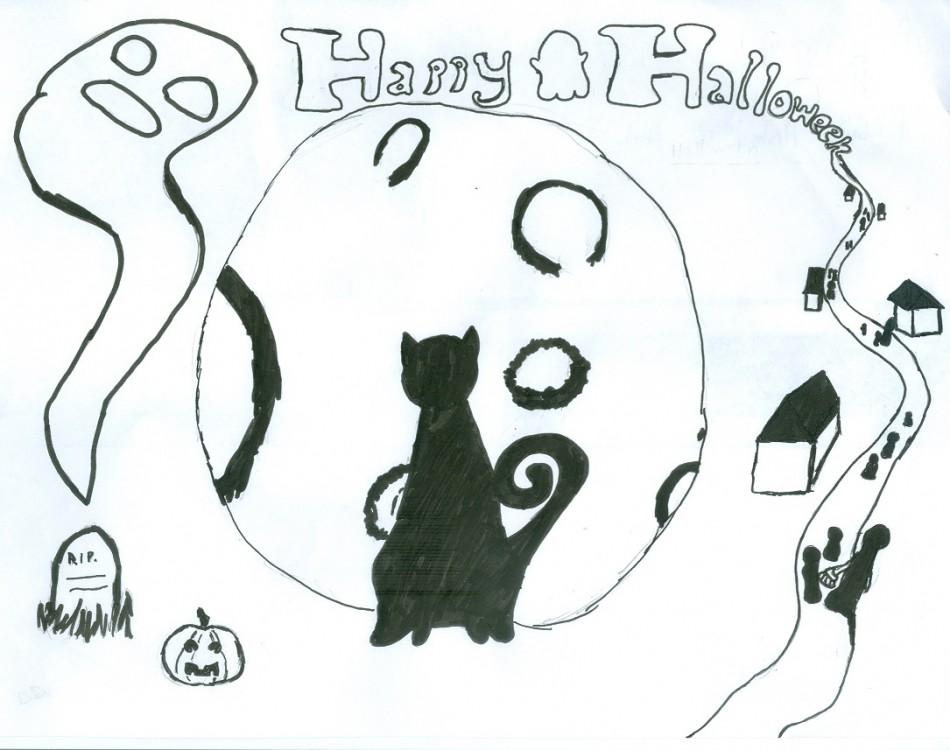The Origin of All Hallow’s Eve and the Monsters
October 23, 2014
When you ask anyone in Weedsport what Halloween is all about, chances are the response will either be something about monsters or getting candy. Many people can recognize these monsters as icons that represent the holiday. Creatures like skeletons, zombies and vampires are a classic halloween costume that has been utilized and modernized throughout the ages since the founding of this holiday.
The word Halloween has been a shortened bastardization of the term All Hallow’s Evening, and the origin of this holiday stems from an ancient Celtic festival known as Samhain (pronounced “sah-win”). During this holiday, they would celebrate the end of the harvest season in Gaelic culture. Samhain is also the time when people would begin to stock supplies and prepare for the upcoming winter. Bonfires were traditionally implemented in these celebrations because they would attract bugs, and in doing so, bats which led to bats being associated with the modern holiday.
The ancient Gaelic people believed that on October 31 each year, the boundaries between the worlds of the living and the dead overlapped and the deceased would come back to life and wreak havoc, such as sickness or damaged crops. In order to appease these spirits, the people would wear masks and costumes, which has transcended down into the typical use of costumes by modern celebrators of Halloween as well as the participation of such entities as ghosts and spirits in the holiday.
A widely recognized icon that represents Halloween is the vampire. Ignoring the more modern renditions of the vampire which place an emphasis on romantic themes and focusing on the appeal of young teenage girls, the more traditional concept of the vampire is a legend of a humanoid-shaped creature that has fangs,glowing eyes, and superhuman strength and speed. All masked behind a pale, sallow face brimming with sharp teeth and black, soulless eyes. This creature is also said to drink from the blood of humans and that its bite can turn a human into a vampire, should they not die from the feeding.
This legend was most likely based off of a Romanian ruler most, commonly known as Vlad the Impaler. Vlad was famous for this ferocity in battle as well as the slaughter of many guests who stayed at his estate. He was also the basis for the book Dracula, which features a vampire and his estate in Transylvania.
Another major part of any Halloween theme would be the undead rising from their graves, made classic with decay, limbs falling off, and torn clothing. However the first mention of zombies in history stem from the Haitian practice of voodoo. Voodoo is essentially sending a person into a living death-like comatose by using a combination of various poisons and neurotoxins, and then depriving them of oxygen for long enough that the person loses most of their cognitive abilities and enters a trance like or zombified state.
The beginning of the virus-leading-to-reanimated-corpses concept first began in George Romero’s 1968 film “Night of the Living Dead” where they were portrayed as mindless undead beings that lose all of their humanity, and can spread the disease through an infectious bite. This also started the concept of undead rising from the grave, though many recent zombie-based works seem to reject this concept.
The last but certainly not the least common monster is the Werewolf. Ever since the earliest settlements of mankind, predators like wolves have been a constant threat to him and his livestock. So began the legend of the Werewolf, a being who by day can walk among mankind undetected, however come the full moon, transforms into a deadly bipedal wolf-like creature. Also known as Lycanthropes, legends of these creatures have been passed down through various cultures and all seem to resemble a similar shape and attributes. The werewolf has had many references in both movies, games and written works and has been a major influence in the modern horror genre.
Halloween’s origin has had a major effect on the modern traditions and customs we celebrate today. All of the icons we associate with the holiday have had a long history that goes back to some of the earliest festivities that mankind has celebrated.
